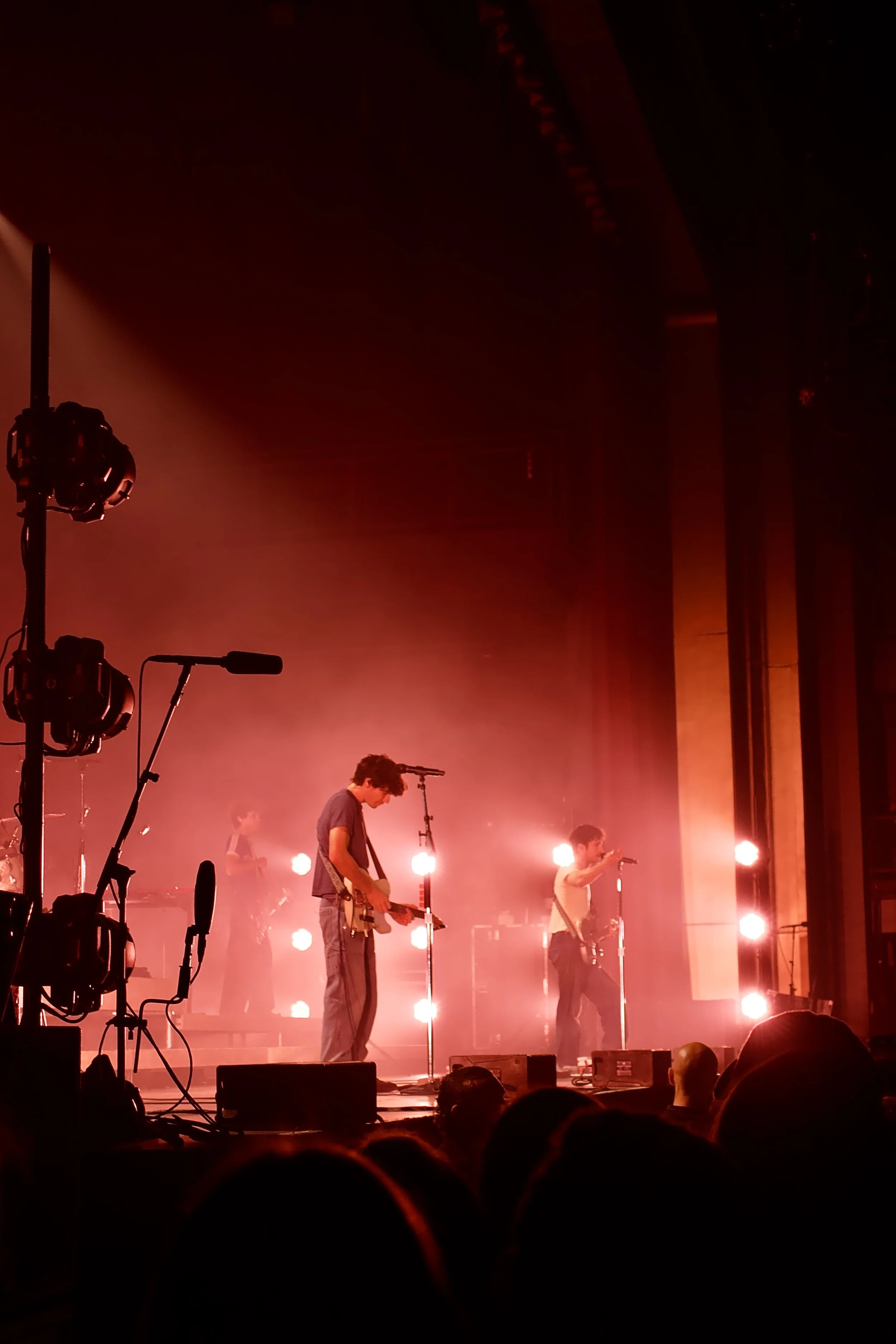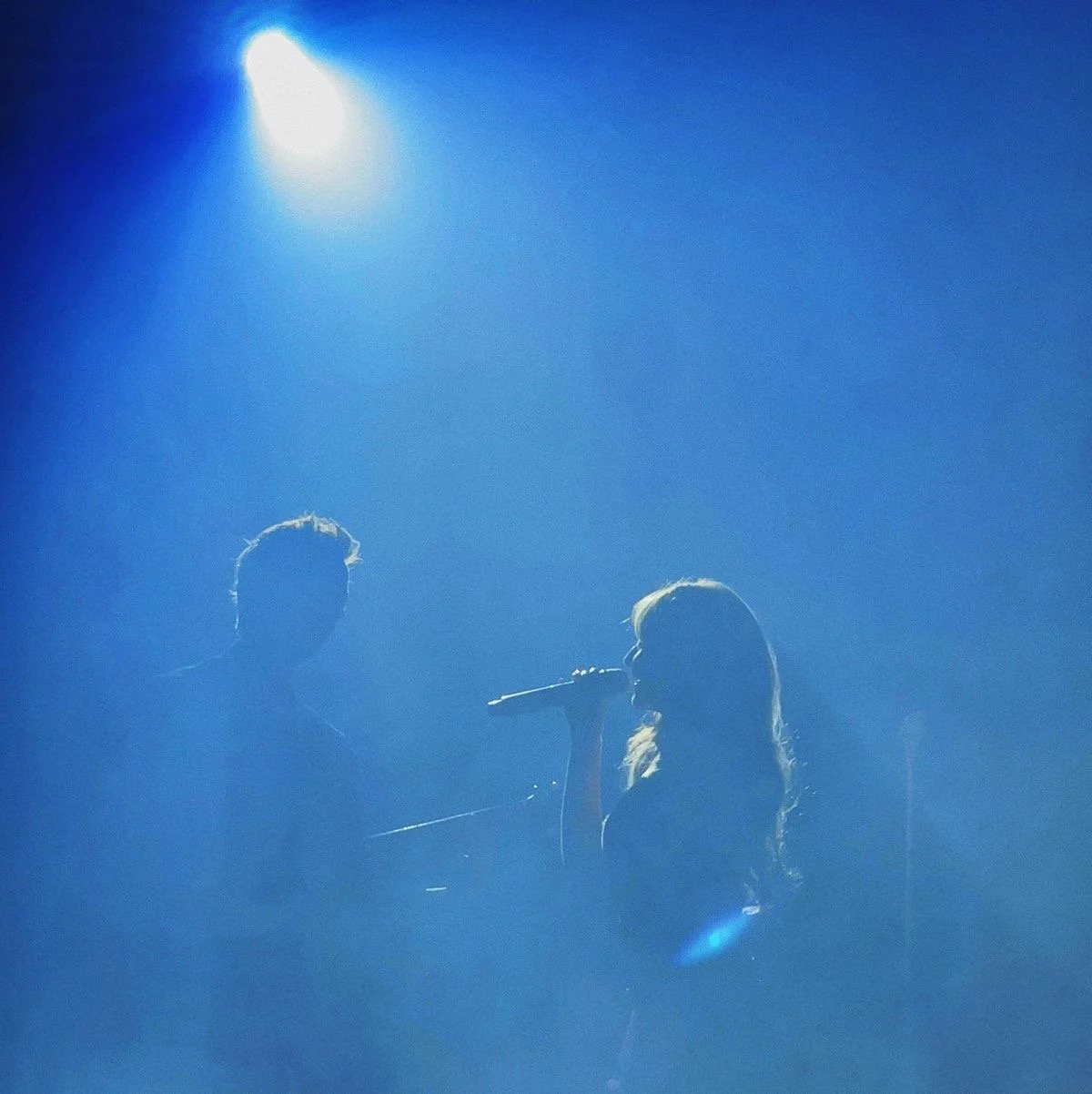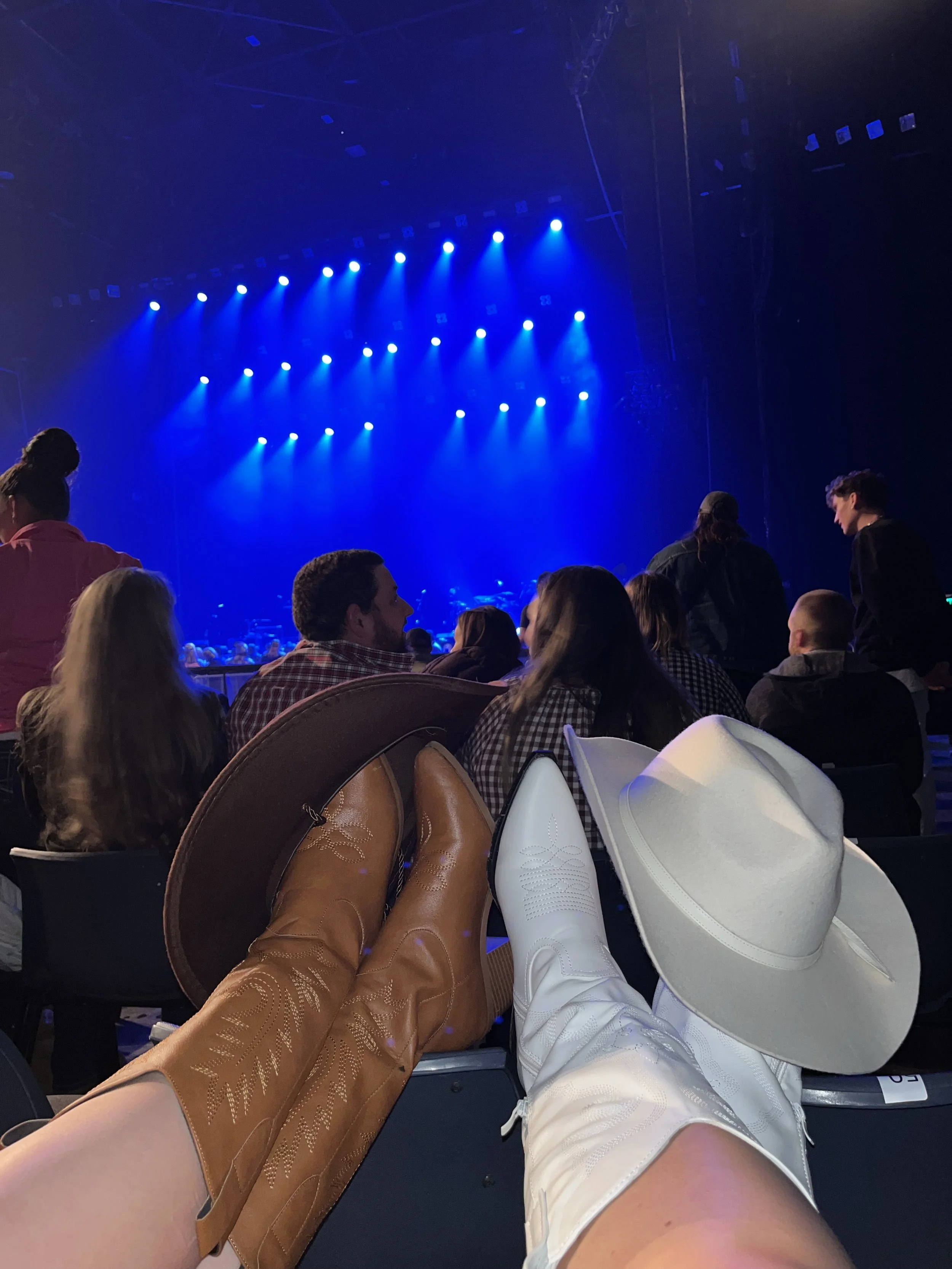How Fan Generated Content (FGC) is Changing the Entertainment Industry on Social Media
In today’s digital-first music landscape, Fan-Generated Content (FGC) is no longer just a random occurrence -it’s a powerful marketing strategy. Making social media work for the artist’s advantage, FGC is reshaping how artists gain attention, build community, and sustain careers. These are my findings on how this shift is creating new opportunities for artists and fans alike.
Quick Intro About Me
I’m Alyssa Sumption, Owner of Social Assumptions. I specialize in digital marketing and content creation authentically for brands and businesses. I am based in Grand Rapids, Michigan, and you can find me traveling all over the Midwest, capturing weddings, events, and consulting. After building my own business in 2020, my goal has been to help others perfect their digital marketing and public relations strategy by staying true to themselves and their craft. Using a mix of my pop culture obsession and Gen Z spunk, I create content that leaves people craving more.
What is UGC/FGC?
User-Generated Content (UGC) is any form of content—photos, videos, reviews, memes, or even tweets—created by everyday people rather than brands or professionals.
Remember in the early 2010s when you’d rush into a gas station, hoping to find a Coke bottle with your name on it just so you could snap a pic and post it online? That was UGC. You weren’t paid, you weren’t prompted by a brand rep—you just wanted to share something fun and personal.
That simple act of posting gave Coca-Cola free advertising and created a viral moment that lived across social media for years and became a pop culture moment. What made that campaign so successful wasn’t just the novelty—it was the strategy behind it.
Every detail, from the font to the name selection to the social sharing prompts, was carefully designed to encourage participation and amplify reach. Today, UGC is a cornerstone of marketing, especially in the music industry, where fans are now the ones driving visibility, engagement, and even chart success. Think of it, you can’t reach everyone with one person/team posting about it. Now, fans are becoming part of the force.
Fan-generated content is a form of User-Generated Content (UGC) created specifically by fans of an artist, brand, or public figure. Unlike traditional marketing, this content is made voluntarily. Out of passion, excitement, or personal connection. It includes everything from concert clips, reaction videos, fan art, memes, outfit recreations, and lyric edits to full-blown tribute accounts.
The Psychology Behind UGC & Consumer Devotion
Social media platforms like TikTok, Instagram Reels, and YouTube Shorts have become the new marketing campaigns.
In today’s digital landscape, consumer loyalty is no longer just about the quality of a product—it’s about emotional connection and participation. Studies and insights from Entrepreneur and Forbes show that when consumers feel seen, heard, or involved in a brand’s journey, their devotion skyrockets.
According to Harvard Business Review, brands that create shareable moments of joy and foster authentic interactions are more likely to build lasting emotional ties with their audience.
Entrepreneur Magazine emphasizes that engagement builds trust, loyalty, and brand advocacy, especially when fans feel their input matters. Forbes adds that community interaction and real-time feedback are key drivers of brand loyalty in 2025. In music, this translates to fans who don’t just stream—they promote, defend, and emotionally invest in the artist’s success.
This isn’t as simple as replying to comments and liking photos; those are small interactions that are oftentimes forgotten. Setting up ways your fans can interact that are easy, wholesome, and require little energy will help from burnout in the future.
Turning Fans Into Creators: Strategies That Can Spark FGC
Fan-Generated Content doesn’t happen by accident—it happens when artists create moments that fans want to capture, share, and relive. It’s the emotional rush of a concert, a lyric that sparks a movement, or a visual cue that becomes a fashion trend; the most effective FGC strategies are rooted in intention and simplicity.
These strategies will explore how artists can use the FOMO effect to drive audience interaction during live shows, how digital Fan HQs and fan edits amplify visibility, and why making fan participation easy and joyful leads to viral engagement.
The FOMO is back…
Fan behavior is more public than ever.
In the early days of music, FOMO was driven by hearing about a cool concert in town at a bar. But in today’s music scene, it’s making a comeback in a more raw, fan-driven form.
Concert clips, surprise guest moments, and emotional crowd reactions are flooding platforms like TikTok and Instagram, creating a sense of urgency for fans to be part of the experience.
When fans not at a show see their feed filled with a surprise song, announcement, or rare “special” inside moment, it sparks a powerful desire not to miss out. For those who are not in the know of this artist, they become infatuated and need to learn more. It is not just luck; it takes pure strategy and psychology to make millions of fans feel touched and be infatuated with what you do.
Artists are leaning into this by creating their own inside jokes, secrets, and fan interactions by deliberately doing these small but impacting ideas.
Audience Integration
Using a real-world example, I went to my first Tate McRae show at the Van Andel Arena in Grand Rapids, MI. During the song “Blood on my Hands”, there is a portion of the song where Tate and her background dancers have about 30 seconds where they danced and had fun. I then realized, a background dancer had a phone and then gave it to someone in the audience.
My sister let me know that in EVERY show, a background dancer asks if they can take a fan’s phone while they are already recording. They then pass it around during the dance and hand it back to the fan at the end.
I LOVED this idea and just thought it was so much fun. About 2 days later, I was on TikTok and boom. The video of the show I was at, and the background dancers as well. Not only with 2.1 million views and 400k likes. Then, I see about 100 more as Tate has been on Tour almost nonstop for 4 years and performed this song hundreds of times.
I then sat and thought about the numbers behind it. This is something a part of the setlist, at every show, that is a piece of FGC Fan-generated content without anyone on the team needing to do anything. Does everyone post it? 100% no way. Not every video will even go viral. BUT, considering you can go on TikTok and find almost every night posted, without needing to do anything except something you were already doing on stage, is a LOW and FREE effort way to create buzz.
Audience View (Halloween Edition) @xanthonyj on tiktok
Fan Recording View @winston.mc27 on Tiktok
Other Examples of FOMO Interactive Audience Activities from other Artists:
Paramore “Misery Business’
One of the most beloved live traditions in modern rock since the 2007 release is Paramore’s decision to let fans take center stage during the explosive bridge of their hit song “Misery Business.” At nearly every show, lead singer Hayley Williams selects a fan from the crowd—often someone with a compelling story or infectious energy—and invites them onstage to scream, sing, and rock out with the band. It’s not just a gimmick; it’s a deeply personal moment that fans remember for life. I personally have been to 3 Paramore shows and can remember each time someone was selected and sang their heart out. I do not remember much of the rest of the show, but I do remember these moments clearly.
Sabrina Carpenter Live Fan Interactions
Right before her big break in 2024, her hit song “Nonsense” became a viral sensation in 2023, not just for its catchy hook, but for the ever-changing, cheeky outros she improvised at each live show. Fans eagerly awaited what she’d say next, often recording and sharing the moment. The #nonsenseoutro hashtag has over 5 billion views across all social channels. Her newer tracks like “Juno” and the now-iconic “Arrested” skit have taken fan interaction to theatrical heights. During performances, Carpenter playfully “arrests” fans and celebrities—handing out fuzzy pink handcuffs to the likes of Nicole Kidman, Anne Hathaway, and Joe Keery, all of which have gone viral across platforms like TikTok and YouTube.
Taylor Swift “22” Hat
One of the most emotional and iconic moments of Taylor Swift’s Eras Tour is the nightly tradition of gifting her black fedora—known as the “22” hat—to a lucky fan during her performance of the song “22.” Her mom, Andrea, picks out one lucky fan every show. The most viral moment was giving the hat to Zobe Bryant’s daughter in LA.
After looking at these examples; one thing is clear. Audience interaction creates a safe and open community for fans to share their love + devotion for their favorite artists in a new way online like never before.
The Evolution of Fan Edits
The most popular and arguably the oldest form of FGC Fan-generated content in the digital age has to be fan-made edits. Similar in appearance to a lyric video, fans make edits of their favorite artists with their own or others’ songs. Looking even before social media, fan engagement looked very different.
In the pre-Internet era, music lovers would mail in forms found in album inserts, magazines, or postcards at the stores that sold music to join official fan clubs. In return, they’d receive newsletters, exclusive photos, autographed merch, and sometimes even handwritten notes from artists. These clubs created a sense of belonging and exclusivity—fans felt like they were part of something special, even if it was just through a stamped envelope.
Fast forward to today, and that same energy has been reborn on social media through Fan HQ pages on platforms like Instagram and TikTok. These are run by the artists’ team. Either openly or, in some cases, pretending to be a fan. In this research, I have discovered that behind closed doors, labels are being accused of creating fake fan accounts, made to look like a fan in their target audiences, to drive attention to newer artists.
Just recently, breakout artist Sombr has come under scrutiny after fans discovered that at least five fan accounts—which appeared to be grassroots pages posting concert clips, edits, and a huge amount of praise—were allegedly run by members of his own team pretending to be fans. (USA Today, Edward Segarra, Read the Full Article)
These accounts, designed to look like organic fan engagement, were filled with curated content that boosted Sombr’s image and visibility across TikTok and Instagram. While FGC (Fan-generated content) is typically celebrated for its authenticity, this revelation sparked a lot of debate online about the ethics of manufactured fandom. Critics argue that it blurs the line between genuine fan culture and strategic manipulation, especially when paired with Sombr’s controversial concert behavior and backlash from older fans who felt he was being inappropriate with sexual themes towards tween-aged fans. The incident highlights a growing tension in the music industry: when does fan engagement become fan engineering? And how much of what we see online is truly fan-driven?
When it comes to these questions, it is a much bigger topic than I can write in this blog. I would like to think not every fan account is completely fake.
When it comes to the Fan HQ pages, as a Social Media Manager, a Fan HQ page should be a place where an artist or their team can post solely on their craft. Not to post edits 35 times a day pretending to be a 14-year-old girl. I think an edit 2-3 times a week would be great. The sheer volume of it makes it inauthentic and spam-like behavior.
With an authentic artist HQ page, I would argue it tastefully allows an artist’s work to live without any other distractions. A personal page is where an artist shows more than that. It’s a place to share everything about their own life. It keeps the super-heavy promotion on one page, and more about building connections/sharing all life moments on the personal page.
Make Fan Interaction Easy
One of the most powerful ways to drive fan engagement is to make it simple, fun, and emotionally rewarding.
Taylor Swift did this perfectly with a single lyric: “Make the friendship bracelets.” That line from her song “You’re On Your Own, Kid” sparked a viral movement where fans began crafting and trading handmade bracelets at every stop of the Eras Tour.
A serotonin-fueled ritual that turned concerts into community-building experiences. Fans dressed up, swapped bracelets, and documented it all on social media, creating a wave of FGC that was both personal and contagious. This kind of interaction doesn’t require a massive budget. Just a clear invitation and one lyric.
This might just seem like a random lyric, but a marketing study by Rajivgo Pinath confirms what artists have long known intuitively: emotional connection drives consumer devotion.
When fans feel part of a community or are reminded of meaningful memories, their loyalty deepens and their engagement becomes addictive. Nostalgia, in particular, activates the brain’s reward centers, releasing dopamine and creating a sense of comfort, identity, and belonging.
In music, this effect is amplified.
A 2025 study on digital music and memory found that autobiographical nostalgia—songs tied to personal life moments—strengthens emotional bonds and increases fan dedication.
Creating Fan Identity
Fashion has always been a powerful tool for self-expression, but in music, it becomes a badge of belonging. When artists adopt signature symbols, colors, or styles, they give fans a visual language to connect with and to wear.
Think of Taylor Swift’s red lipstick, Beyoncé’s bee motifs, or Harry Styles’ feather boas. These aren’t just aesthetic choices; they’re emblems of identity. When fans dress up for shows, they’re not just attending—they’re participating.
This creates a ritualistic experience that’s both personal and communal, sparking joy and a sense of unity. It also drives FGC (Fan-generated content), as fans love to share their concert fits, DIY recreations, and themed outfits online.
By embedding style cues into lyrics, visuals, or merch, artists can guide fans toward a shared look, creating their own “era” effect.
The result?
A deeper emotional tie, a stronger sense of community, and a wave of content that keeps the artist’s brand alive far beyond the stage.
In times of economic distress, people tend to seek comfort, connection, and control—and music offers all three.
Fans aren’t just attending concerts—they’re dressing up, crafting themed outfits, and engaging in rituals that make the experience feel sacred.
The rise of “concert fashion” is a direct response to this need for escapism and identity.
As fashion trends shift toward nostalgia and personalization during economic downturns, fans can feel invested emotionally in artists and in turn, can feel the need to identify with them.
The same feeling as having a sports jersey. Or, going into a store, seeing a symbol of your favorite artist and needing to have it. This creates an emotional tie—leading for the need to share via word or mouth or social media.
More fan participation or identity to be drawn to leads to more FGC, which in turn fuels visibility and loyalty.
Everything is Content
Creating unforgettable fan experiences is only half the equation—capturing them is what turns moments into momentum.
Whether it’s a sea of fans trading bracelets, a surprise onstage guest, or a crowd dressed in themed outfits, these are the visuals that fuel your online presence.
Encourage fans to tag you, use branded hashtags, and share their perspectives. Better yet, have a content strategy in place to document these moments professionally.
Behind-the-scenes footage, crowd reactions, outfit highlights, and post-show recaps are all gold for social media. The more you capture, the more you can amplify—and the more your fans will feel seen.
Event Content Creation Services
Have you ever said after an event, “Ugh, I wish I had taken more photos, but I was too busy ”? That is exactly what I aim to be the solution for.
I jump into events and capture them as a fly on the wall. As a long-time content creator, I can capture anything aesthetically and with the perfect angles.
This service is perfect for businesses, capturing raw iPhone video for social media use or content creation of short-form videos edited and posted on the spot at events.
Contact capture@socialassumptions.com for more information on content creation services.
KEEP READING





















